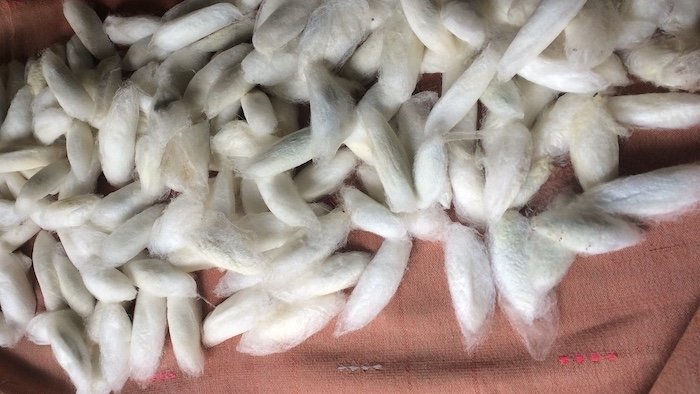The Season Of Silk
Spring is the season for silk. Silk garments, scarves, and bedding are soft and shiny, with a gorgeous drape and flow that make them look and feel luxurious. The fabric is also incredibly strong. (My favorite ring sling for my infant daughter was made of silk and was infinitely more durable than the cotton ones I owned). But it also shrinks, so caring for it properly is very important. Silk is heat-regulating, making it appropriate for year-round wear. It can also absorb up to 30 percent of its weight in moisture but leaves your skin dry, making it perfect for hot summer days. But it can also insulate and retain heat, making it suitable for cold winter days too! Bellacara has silk eye pillows and pillowcases, which will enhance your sleep, protect your hair, and are hypoallergenic.
But do you know where silk comes from?
The origin of silk:
Silk is 100 percent natural.
It is produced by insects who are making the fiber for their nests and cocoons.
Insects who make silk fiber: silkworms (most common), bees, beetles, hornets, and more.
Tussah Silk Yarn
Three most common types of silk:
Mulberry: It is named after the Mulberry tree leaves where the Bombyx Mori or Bombyx Indica silkworm creates its cocoon. This silk is entirely domesticated. To make their cocoons, the moth produces one long continuous thread that is pure white, odorless, and hypoallergenic. As a result, Mulberry silk is a luxurious fiber and one of the most expensive silks on the market.
Mulberry Silkworms, photo courtesy of Inserco.org
Tussah: This less refined silk is named after the Chinese Tussah Moth, which feeds on the Chinese oak tree and other forest trees. The cocoons are collected from the wild forest and not cultivated. The fiber is shorter and thicker than Mulberry as the moth has already left the cocoon when it is harvested, so the long strand has been broken at the point that the moth exits the cocoon.
Tussah Silkworm, photo courtesy of Pandasilk.com
Eri: This silk is the product of the domesticated silkworm, Philosamia ricini that feeds on castor leaves and is mainly produced in India. It is the only domesticated silk fiber that is harvested after the moth has emerged from its cocoon. The resulting fiber is shorter and looks more like wool roving. It is spun into thread or yarn and used for weaving or hand or machine knitting.
Eri Cocoons, photo courtsey of Wikipedia
There are many other silk types, including Mugga and even spider silk, but over 90 percent of the silk on the market is Mulberry.
Grades of Mulberry silk, the most common type of silk:
Reeled silk comes from the inner part of the cocoon and is the highest grade, as it is one long unbroken individual thread. This provides a smooth and shiny fabric and is what most silk scarves and camis are made from.
Spun silk is made from the longest remaining threads left after the reeled silk is made, mostly from the cocoon's outer, more rough parts. These shorter threads are spun together to make yarn that can be knitted with or made into fabric.
Bourette / Tsumigi / Silk Nail: This grade is made from what is now left after reeled and spun silk has been harvested. It is rougher with more "grip" than other grades.
So, what about that silkworm?
Silk is not an "animal-free" fabric option, as it comes from insects, and in most cases, the insect died for the production of that silk. All Mulberry silk is harvested before the moth leaves the cocoon after the cocoon has been boiled. If you are vegan or want your silk to be sourced sustainably, be sure to check the label. If it has a moth on it or is referred to as peace silk or ahimsa silk (or is Eri silk), it is harvested after the chrysalids were allowed to evolve into butterflies and complete their life cycle. Tussah silk is a wild silk harvested in the forest after the moth has left its cocoon as well. We have a silk yarn here at fibre space that is sustainable and produced after the chrysalid has left its cocoon - Knitting for Olive Pure Silk. This yarn is spun with ethical, technical, and environmental standards that guarantee it is free from harmful chemicals often used in texture production.








